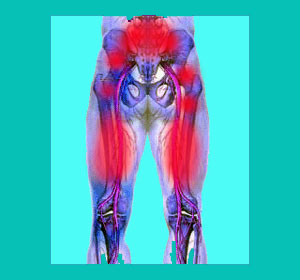
What type of neurological effects of a herniated disc should you expect as a diagnosed patient? Will you suffer pain? Will you experience tingling, numbness, weakness, burning or any other type of disconcerting symptom? Will you suffer foot drop or physical consequence in another part of the body, such as sexual dysfunction? Will you become incontinent or paralyzed? These are all very frightening questions asked by diagnosed patients every day.
Herniated discs can only produce symptoms through neurological interactions. This is because they have no internal blood supply or nerve endings of their own. However, since the spinal discs are in close anatomical proximity to the spinal nerve roots and the spinal cord, they can certainly negatively influence the function of these vital tissues and create a diversity of symptomatic expressions.
This important dialog delves into the common and potential neurological effects of a herniated disc in various parts of the body. We will provide an objective view of the subject that will help every diagnosed patient to understand the facts, while avoiding the significant nocebo effect imparted by the many myths regarding herniated discs.
Neurological Effects of a Herniated Disc by Location
Symptomatic herniated discs can create effects in areas of the body which are served by nerve tissues that reside near to the disc abnormality. When a herniated disc compresses the spinal cord, or the cauda equina en masse, symptoms can be produced virtually anywhere in the body, including the possibility of expressions existing above the herniated disc in cases of upward cellular tissue compression in the spinal cord. We see this specific example in cases of cervicogenic headaches. However, the classic manifestation of central spinal stenosis caused by a herniated disc includes symptoms anywhere below the affected spinal level. Fortunately, it is rare for a herniated disc to compress the spinal cord or the entire cauda equina bundle.
More commonly, a herniated disc can compress or chemically irritate a single spinal nerve root, creating the potential for symptoms in the innervated area of the body served by the affected nerve. Cervical herniated discs might compress a nerve in the neck, enacting symptoms in the neck, shoulders, arms and/or hands, most often unilaterally, but with bilateral presentations possible in less common circumstances. Meanwhile, lumbar herniated discs have the potential to create similar expressions in the buttocks, legs and/or feet.
There is little, if any, proven evidence that links herniated discs to the existence of actual neck or back pain and surgical outcomes certainly demonstrate that invasive care is far more effective at resolving symptoms in the limbs compared to curing symptoms in the back itself.
Bulging Disc Neurological Consequences
If a herniated disc is indeed symptomatic, what kind of expressions might it create in affected areas? The typical symptoms vary be diagnosis, including all of the following usual presentations:
Disc-enacted central spinal stenosis might involve compression of the spinal cord in the neck or the cauda equina in the lower back. When occurring in the neck, symptomatic stenosis can cause a wide range of symptoms, including localized pain in some patients, as well as tingling, numbness and weakness in areas of the body below the affected level of the spine. This means that the majority of the body might suffer any of these symptoms, with the addition of potential autonomic, sensory or motor function effects of cord compression on the organs or systems of the anatomy. In the lower back, central stenosis will create the potential for pain, tingling, numbness and weakness in the buttocks, legs and feet, often called sciatica. Sexual dysfunction and incontinence are less common consequences of either location of central stenosis.
Disc-enacted pinched nerve roots will create the potential for transient pain locally (uncommon, but possible), as well as progressive pain, tingling and numbness in the innervated region of the body served by the compressed root. Sensation may disappear all together and motor function might fail. When the disc resides in the neck, these expressions will affect specific regions of the shoulders, arms or hands, while lumbar herniations will affect particular regions of the buttocks, hips, legs or feet.
Chemical radiculitis may occur when a disc leaks irritating nucleus proteins onto nearby nerve tissues. The effects usually include mild local pain to mild pain, tingling and burning in areas of the body served by the affected nerve. Almost all chemical radiculitis eventually resolves organically, although it might take quite a long time in some patients.
Diagnosing Neurological Effects of a Herniated Disc
In order to enjoy the benefits of an accurate diagnosis, all patients should be aware of the process of evaluating a herniated disc correctly and also should understand why so many disc abnormalities are misdiagnosed, when they exist, but are not the true source of symptoms:
Herniated discs can not be diagnosed using any type of physical exam or straight leg raising test. Only CT and MRI scans can accurately diagnose and help evaluate a particular herniated disc finding.
Once verified, a herniated disc should be analyzed for its symptomatic potential. If no symptoms are present, then the disc is obviously innocent. If symptoms are present, they should be correlated by location of the disc abnormality and possibility for creating neurological pathology. Only then should a determination be made if the disc may be the origin of pain. Innervation maps should be used and imaging evidence utilized to determine any verifiable neurological influence which may be occurring.
In virtually all cases, symptoms attributed to a herniated disc are not correct in expected clinical presentation or are simply far too diverse to possibly come from a single disc issue. This rule applies to more than 95% of diagnosed patients who are told that their pain is a result of a herniated disc. The reality of scientific research has long since proven there to be no correlation between back pain and herniated discs and also the truth that the vast majority of herniated discs are not symptomatic in any way. Of those which are symptomatic, symptoms will exist in the limbs and be completely treatable with appropriate curative care. If you have treatment-resistant herniated disc pain, we strongly suggest considering the obvious fact that misdiagnosis is the most logical reason why.
Herniated Disc > Herniated Disc Symptoms > Neurological Effects of a Herniated Disc





